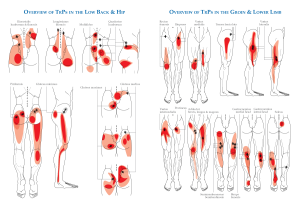Kidney laceration after acupuncture 2023 – The BMAS Blog

Stimulated by Cheng et al 2023.[1]
ES – erector spinae
key to acronym
The risk of needling the kidney must have come up on every acupuncture course I have ever taught over the last 27 years. My comment is usually that acupuncture needles are unlikely to do much damage and that I am more concerned in not making any holes in the colon or lung, but that since there is no benefit in needling the kidney with an acupuncture needle, we should definitely try to avoid it too.
In a way I am pleased that the risk of needling kidneys with acupuncture needles has finally made it into print with this case report.
The title emphasises the combination of acupuncture and tuina massage, and the authors have postulated that the massage may have contributed. They cite the case of a large hepatic haematoma caused by massage in an otherwise healthy woman aged 39.[2]
In this case the patient was a slim 31-year-old woman who had received acupuncture followed by tuina for chronic low back pain 8 hours prior to presentation. She presented with left flank pain and gross haematuria.
Abdominal CT revealed a large haematoma in the left para-renal space and a 1.0cm laceration over the posterior aspect of the kidney. The image in the paper shows a haematoma in cross-section that looks to be over twice the area of the left kidney, displacing the kidney anteriorly to beyond the level (coronal plane) of the front of the vertebral body.
The authors suggest that a needle inserted at BL23 may have been responsible for the laceration. They suggest that the distance from skin to kidney was just 3.5cm at the site of the kidney injury, but I doubt that a needle placed 3.5cm deep at BL23 in this patient would have reached the kidney.
They describe BL23 as being 5cm lateral to the midline but overlook the more important method of finding the point as the highest point of ES – the midpoint between the midline and the lateral aspect of ES. In a slim female patient, I have never seen the width of ES being 10cm at this level (L2). The distance of 3.5cm to the kidney would almost certainly have been measured from beyond the lateral aspect of the bulk of ES.
My estimate from the CT image suggests that it was at least 4.0cm from skin to the depth of the lumber TP at approximately BL23. My guess is that the offending needle was placed more laterally than BL23. Perhaps BL52 is a more likely choice, especially if it was inserted perpendicular to the surface rather than at a safe angulation (approximately 60 degrees to the sagittal plane).
I guess the laceration was related to respiratory movement transmitted to the kidney and a fixed needle in the musculature of the loin. Any laceration could have been exacerbated by vigorous massage in the loin lateral to ES, but not if applied directly to ES, as would be more typical.
This reminds me of a rather uncomfortable massage I was subjected to in northwest China in 2018. Five of us were all having a massage in the same room, and I was the most foreign looking as well as being the only male. No meaningful communication was possible and the young woman performing my massage appeared to be trying to get me to squeal louder than any of my female colleagues. She appeared to deliberately twang all of my accessible neurovascular bundles, and I remembered wondering whether she actually knew they were nerves and therefore not the best target for vigorous manipulation.
References
1 Cheng T-Y, Chiu AW, Chen M. Kidney laceration after acupuncture and Tuina: A case report. Asian J Surg 2023;46:1667–8. doi:10.1016/j.asjsur.2022.09.149
2 Trotter JF. Hepatic hematoma after deep tissue massage. N Engl J Med 1999;341:2019–20. doi:10.1056/NEJM199912233412616
Published




